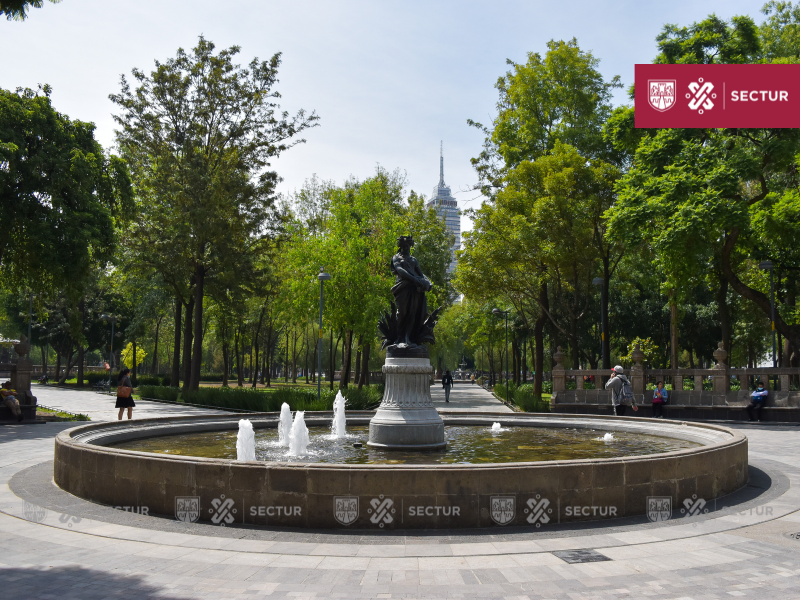
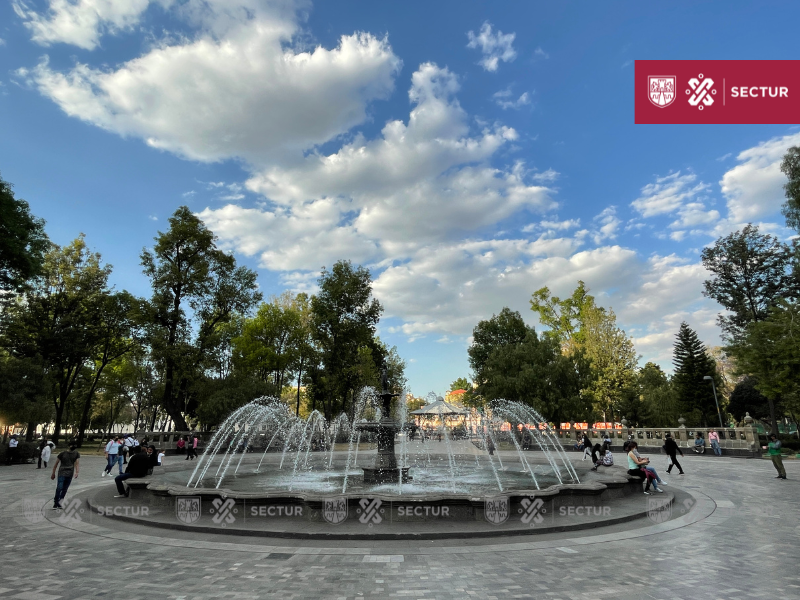
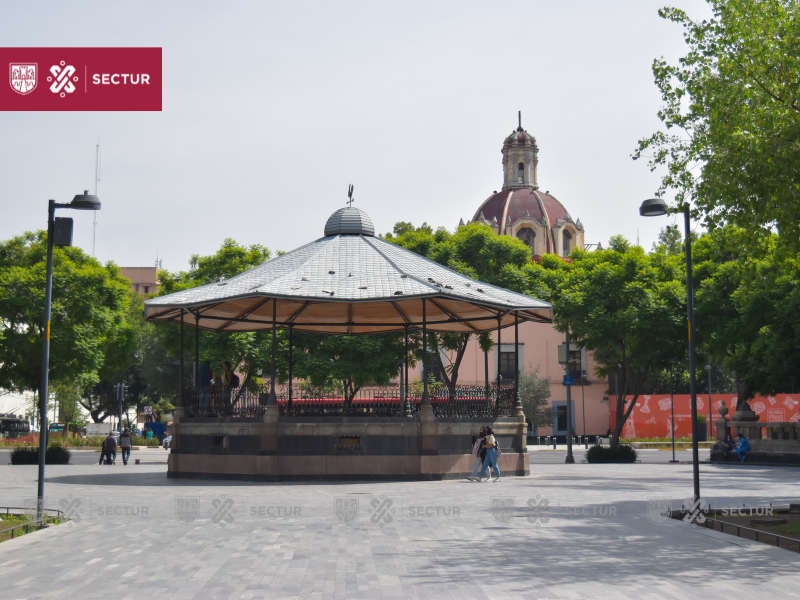
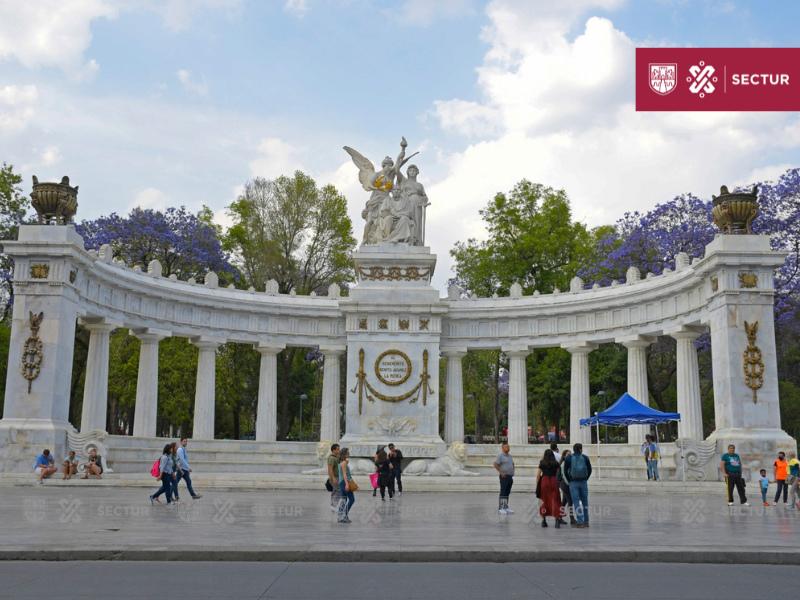
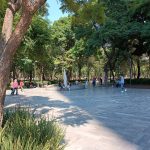 Considered the oldest public park in Latin America, it was opened in 1592 by the Viceroy Luis de Velasco and owes its name to the custom of planting poplars brought from Morocco and Spain. During the 16th century, the park boasted fountains, ponds and fish. Between 1770 and 1775, the layout of its promenades was redesigned and five fountains carved in quarry stone with mythological themes were placed. By the 19th century the environment of the alameda changed drastically and its sculptures were replaced by new works. In the center is the “Fountain of the Americas,” but also “Neptune,” “Mercury,” “Aphrodite Anadiomene,” “The Danáides,” “Spring,” and “The Nymphs.”
Considered the oldest public park in Latin America, it was opened in 1592 by the Viceroy Luis de Velasco and owes its name to the custom of planting poplars brought from Morocco and Spain. During the 16th century, the park boasted fountains, ponds and fish. Between 1770 and 1775, the layout of its promenades was redesigned and five fountains carved in quarry stone with mythological themes were placed. By the 19th century the environment of the alameda changed drastically and its sculptures were replaced by new works. In the center is the “Fountain of the Americas,” but also “Neptune,” “Mercury,” “Aphrodite Anadiomene,” “The Danáides,” “Spring,” and “The Nymphs.”
Monument to Beethoven and Alexander von Humboldt can be admired in the park. On Juarez Avenue, on the sidewalk of the Alameda and on the opposite side, are several bronze reproductions of sculptures that were acquired by the City Hall to decorate the promenade. The originals are made of marble and can be seen in the National Museum of Art and the National Museum of San Carlos.
Ruta del Corazón de México – Alameda – Madero
Though one might like to photograph the Alameda Central from the air, the true enchantment of the park can best be understood in strolling its multiple promenades. Perhaps nowhere has the idea of the repetitiveness of a park laid out geometrically, in the style of a formal garden, been more firmly refuted.
The Alameda Central is beloved for its corners. Its confluences and its remarkable shade and light ensure that it plays a central role it plays in the lives of city residents. Officially created in 1592, it's the oldest public park in the Americas. The area had been a marketplace in the west of Tenochtitlan. Viceroy Luis de Velasco II ordered that a public green space be created for city residents sometime prior to 1592. Although many cities in Latin America also have alamedas, their names come from this one, and from the Spanish word álamo, meaning poplar tree. The western half of the park had previously been an open plaza used for the execution of heretics at the height of the inquisition. (Only about 30 such executions are believed to have been carried out in all of Mexico.) The park was likely expanded to include this area by about 1791. By the time the Mexican war for Independence was won in 1821, the Alameda was open to the public in something like its present form. Gas lamps were installed and these were converted to electric lamps by 1892. Legend has it that the 1846 triumph of President Santa Anna was celebrated by filling the Alameda's fountains with alcohol so all the city residents could imbibe. The 2012 rehabilitation of the park included replacing all of the damaged pavement with marble. A complete replanting of the many gardens included lots of new trees. Many plants are indigenous to the region and the project has broadly been considered a complete success. There's more to the area surrounding the Alameda, here.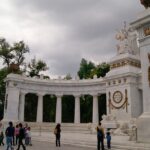
Nearest at 0.08 kms.
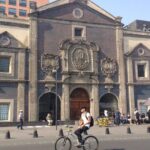
Nearest at 0.11 kms.
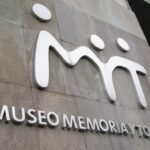
Nearest at 0.17 kms.

One of Mexico City's classic neighborhood markets and meeting places . . .

A giant neighborhood market brings the surrounding streets to life . . .

Practically the Public Market for the Mexico City Airport...
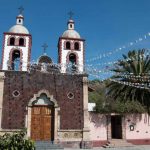
The neighborhood church of one of the oldest neighborhoods in the east of Mexico City...
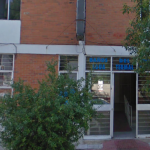
Mexico City's most famous and most medicinal public bathhouse...